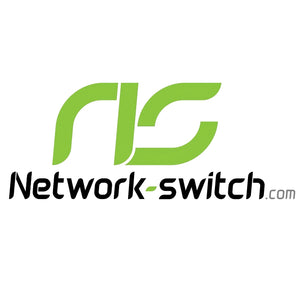Building a smart home is no longer a futuristic concept but an achievable reality. To successfully create a fully integrated, reliable, and efficient smart home, it’s crucial to have a robust and scalable network infrastructure.
Power over Ethernet (PoE) managed switches simplify this process by providing both power and data through a single Ethernet cable. This article guides you step-by-step on creating a smart home with PoE managed switches, highlighting essential components, setup details, and best practices.
Why do you need a smart home?
Smart homes offer numerous advantages, such as automation of daily tasks, enhanced security through remote monitoring, improved energy efficiency, and greater convenience. By integrating smart devices, you gain complete control over your home environment, accessible from anywhere, ensuring comfort, safety, and significant energy savings.

What are PoE Managed Switches?
PoE managed switches deliver both data and power to connected devices using Ethernet cables, reducing the clutter of multiple cables and adapters. Managed switches offer advanced networking features, including VLANs, security protocols, and detailed monitoring capabilities, essential for effective management of smart home devices.
Important Features of Managed PoE Switches in Smart Homes
-
SNMP (Simple Network Management Protocol)
Enables effective monitoring and managing of network devices remotely. -
VLAN (Virtual Local Area Networks)
Segregates network segments to enhance security and traffic efficiency. -
RSTP (Rapid Spanning Tree Protocol)
Prevents network loops, ensuring continuous and stable connectivity. -
LACP (Link Aggregation Control Protocol)
Aggregates multiple network connections to boost bandwidth and provide redundancy. -
ACL (Access Control List)
Controls network traffic for improved security by restricting access to sensitive network areas.

Essential Components for Building a Smart Home with PoE Managed Switches
1. Routers
| Product | Description | Key Features |
| Huawei WiFi AX3 | Wi-Fi 6 Router | Dual-band, 3000Mbps |
| TP-Link Deco X50-PoE | Mesh Router with PoE | AX3000, PoE support |
| Ubiquiti Dream Machine | Router and Security Gateway | Integrated security and management |
2. Wireless Access Points (APs)
Wi-Fi 6 APs:
| Brand | Model | Description |
| Ruijie | RG-AP820-I | Ceiling-mounted, high-capacity |
| Ubiquiti | UniFi U6 Pro | Professional AP for large areas |
| Huawei | AirEngine 5761-11 | Indoor AP with smart antenna |
Wi-Fi 7 APs:
| Brand | Model | Description |
| Ruijie | RG-AP9861-R | Ultra-high-speed, ideal for dense setups |
| Ubiquiti | UniFi U7 Pro | Advanced AP, enhanced bandwidth |
| Huawei | AirEngine 6776-57T | Tri-band, multi-gigabit capabilities |
3. PoE Managed Switches
| Brand | Model | Description |
| Cisco | Catalyst 9200-24P | Compact, reliable, suitable for home use |
| Huawei | S5720S-28P-PWR-LI-AC | High-power, 24-port with uplink capability |
| Ruijie | RG-S5350-24GT4XS-P-E | Advanced Layer 3 features and reliability |
4. Smart Devices and Hubs
- Smart Hubs: Aeotec Hub, Bosch Controller, TP-Link Deco Mesh.
- Smart Devices: IP cameras, smart lights, smart thermostats, sensors.
Step-by-Step Installation Guide

Switch Configuration
- Access the switch interface via web browser.
- Configure VLANs for traffic segmentation.
- Set SNMP for network monitoring and ACL for security.
Hardware Setup and Connection
Properly connecting devices ensures optimal network performance. Follow these detailed steps:
- Router to Switch ConnectionConnect your router’s LAN port to the PoE managed switch using a high-quality Ethernet cable (Cat6 recommended). Ensure the switch acquires an IP address from your router automatically or assign manually if needed.
- Wireless Access Points (APs)PoE-supported APs (e.g., Ruijie RG-RAP2260(G), Ubiquiti UniFi U6 Pro): Connect directly via Ethernet cable to the PoE ports on your switch for both power and data. Non-PoE APs: Use PoE splitters/injectors or separate power adapters and Ethernet cable for data.
- Smart DevicesPoE-compatible devices (IP cameras, VoIP phones): Connect directly to switch PoE ports. Non-PoE devices: Connect via Ethernet cable for data and separately powered.
- Cable Quality & LengthUse high-quality cables (Cat6 or above) to prevent power loss and data interruptions. Avoid cable runs exceeding 100 meters without signal boosting equipment.
Mounting Options
- Rack-mounted: Ideal for centralized management.
- Wall-mounted: Space-saving, accessible.
- Desktop placement: Convenient for smaller areas.
Conclusion
Integrating PoE managed switches into your smart home setup provides reliability, efficiency, and security, simplifying your smart home installation. By carefully selecting network components and following detailed setup guidelines, you can ensure optimal performance, scalability, and seamless automation for your smart home.
Frequently Asked Questions (FAQs)
Q: Can non-PoE devices connect to PoE switches?
A: Yes. PoE switches automatically detect if power delivery is required.
Q: Is PoE safe for smart home devices?
A: Yes. PoE is specifically designed for safe power delivery.
Q: What are the benefits of VLANs in smart homes?
A: VLANs enhance security by isolating network segments and improving performance.
Q: What happens if the switch fails?
A: Devices will lose connectivity. Consider switches with redundancy or backup systems.
Did this article help you or not? Tell us on Facebook and LinkedIn . We’d love to hear from you!






 https://network-switch.com/pages/about-us
https://network-switch.com/pages/about-us





